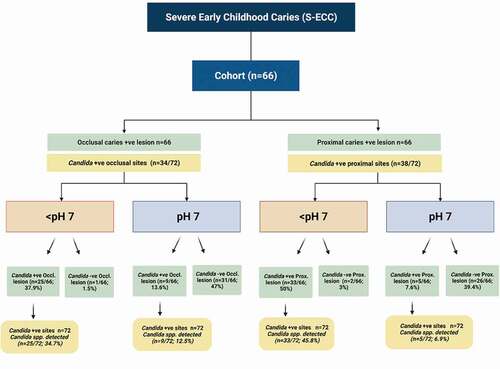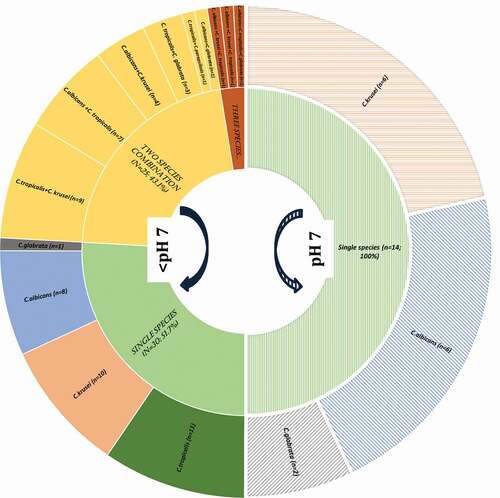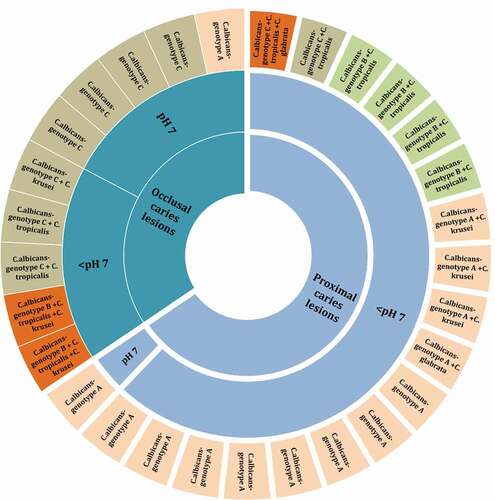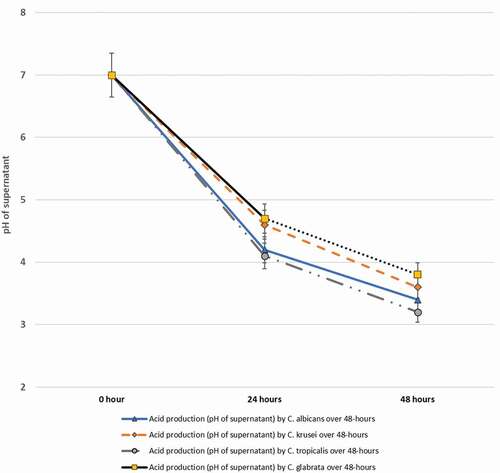Figures & data
Table 1. Amplicon sizes (base pairs) results from multiplex PCR amplification using yeast specific (Universal-UNI1 and UNI2) and corresponding species-specific primers of Candida spp
Table 2. Primers used for the determination of Candida albicans genotypes
Table 3. Frequency distribution of prevalence of different Candida species in terms of their occurrences as single, dual and triple species in total 72 Candida positive sites (34 occlusal and 38 proximal)
Figure 1. Prevalence of Candida in proximal and occlusal S-ECC categorized as per the pH of the lesions

Figure 2. Candida species habitation at <pH 7 (acidic) and pH7 of deep-dentine caries lesions -ICDAS caries code 5 and 6

Figure 3. Distribution of C. albicans (n = 29) genotypes (A, B and C) as single, dual, and mixed species at neutral pH 7 and acidic <pH 7 in occlusal and proximal -dentine caries lesions

Table 4. The in vitro acidogenic potential of clinical isolates of Candida species and genotypes of C. albicans from ECC lesions at 24 hours- post exposure to 100 mM glucose (mean ± SD)
Table 5. Aciduric potential of clinical isolates of Candida species and genotypes of C. albicans at 24 hours- post consumption 100 mM of glucose (mean ± SD)

